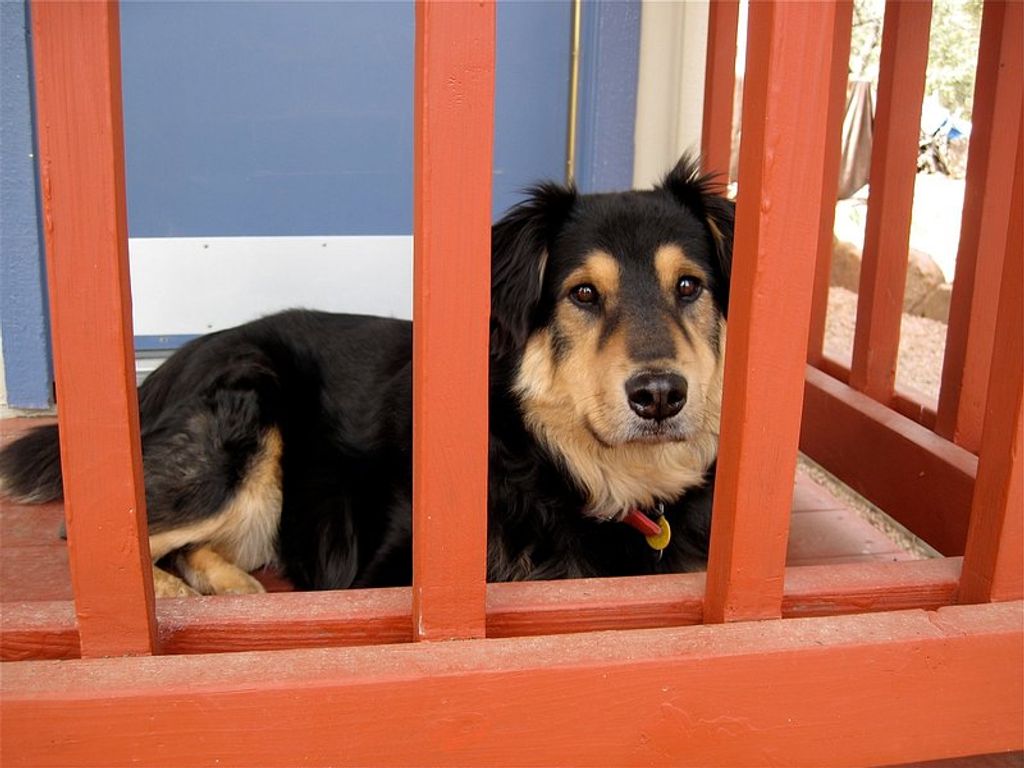Exploring Foster Care Programs for Dogs
Foster care programs for dogs provide a temporary home for dogs in need, offering numerous benefits for both the dogs and the foster families. These programs work by matching dogs with suitable foster homes, where they receive love, care, and socialization while they wait for their forever homes. Finding the perfect foster home involves careful consideration of the dog’s needs and the foster family’s capabilities. Additionally, preparing the home for a foster dog ensures a safe and comfortable environment. In this article, we will explore the journey of a foster dog, the challenges and rewards of foster care, and ways to support foster care programs.
Key Takeaways
- Foster care programs provide temporary homes for dogs in need.
- Foster care offers numerous benefits for both dogs and foster families.
- Finding the perfect foster home involves careful matching.
- Preparing the home for a foster dog ensures a safe environment.
- Supporting foster care programs can be done through volunteering, donating, and spreading awareness.
Why Foster Care Programs are Paw-some

The Benefits of Foster Care for Dogs
Foster care programs for dogs are paw-some because they provide a temporary home for dogs in need. When dogs are placed in foster care, they have the opportunity to experience love, care, and stability while they wait for their forever homes. Foster care also helps to alleviate overcrowding in shelters, giving more dogs a chance at finding their perfect match. It’s a win-win situation for both the dogs and the foster families.
How Foster Care Programs Work
Foster care programs for dogs are an essential part of providing temporary homes for dogs in need. When a dog enters a foster home, they are given the opportunity to experience a loving and nurturing environment while they await their forever home. Foster homes play a crucial role in helping dogs transition from a shelter setting to a home environment. These homes provide a safe and comfortable space where dogs can relax, heal, and learn to trust again.
Finding the Perfect Foster Home
When it comes to finding the perfect foster home for our furry friends, we understand the importance of temporary foster care for dogs. It provides a safe and loving environment for dogs in need while they wait for their forever homes. Our goal is to match each dog with a foster home that meets their specific needs and provides the care and attention they deserve.
Preparing Your Home for a Foster Dog
When preparing our home for a foster dog, we want to create a safe and comfortable environment for them to thrive in. Here are a few tips to help you get started:
- Secure any potentially hazardous items or substances, such as cleaning supplies or medications, out of reach.
- Create a designated space for the foster dog with a cozy bed, toys, and water and food bowls.
- Remove any valuable or fragile items that could be accidentally knocked over or damaged.
Remember, each foster dog is unique and may have specific needs or preferences. It’s important to observe their behavior and make adjustments to your home accordingly.
Tip: Providing a quiet and calm area for the foster dog to retreat to can help them feel more secure and relaxed.
The Journey of a Foster Dog

From Shelter to Foster Home
When a dog is first brought from the shelter to a foster home, it can be a daunting experience for both the dog and the foster family. The dog may be nervous and uncertain about their new surroundings, while the foster family may feel a mix of excitement and apprehension. It’s important to create a safe and comfortable environment for the dog to help them adjust.
One way to help the dog feel more at ease is to provide them with a quiet space where they can retreat to when they need some alone time. This could be a separate room or a cozy corner with a comfortable bed. It’s also helpful to establish a routine for feeding, walking, and playtime, as this can provide a sense of stability and predictability for the dog.
In addition to creating a safe and comfortable environment, it’s important to gradually introduce the dog to different areas of the house. Start with one room and slowly expand their access as they become more comfortable. This allows the dog to explore at their own pace and prevents them from feeling overwhelmed.
- Provide a calm and quiet space for the dog to retreat to
- Establish a routine for feeding, walking, and playtime
- Gradually introduce the dog to different areas of the house
Remember, each dog is unique and may require different strategies to help them transition from the shelter to their foster home. Patience, understanding, and lots of love are key to helping them feel safe and secure.
Building Trust and Confidence
Building trust and confidence is crucial when fostering dogs. Many foster dogs have been abandoned, abused, or neglected, and they may have trust issues as a result. It’s important to give them time and space to adjust to their new environment. Patience is key in building a strong bond with a foster dog. Here are some tips to help build trust and confidence:
- Create a safe space: Set up a designated area in your home where the foster dog can feel secure. Provide a comfortable bed, toys, and a quiet environment.
- Use positive reinforcement: Reward good behavior with treats, praise, and affection. This helps the foster dog associate positive experiences with you.
- Establish a routine: Dogs thrive on routine, so establish a consistent schedule for feeding, exercise, and playtime.
Remember, building trust and confidence takes time and effort, but the rewards are immeasurable. By providing a loving and supportive environment, you can help a foster dog overcome their past and prepare them for a forever home.
Socializing and Training
When it comes to socializing and training foster dogs, we believe that patience and consistency are key. It’s important to create a positive and supportive environment for the dog to learn and grow. We recommend starting with basic obedience training, such as teaching them to sit, stay, and come when called. This will help them build confidence and trust in their new surroundings. Additionally, we encourage foster parents to expose the dog to different environments, people, and other animals to help them become well-rounded and adaptable. We understand that each dog is unique and may have different needs, so we suggest consulting with a professional trainer or behaviorist for personalized guidance. Remember, foster dogs may have had previous negative experiences, so it’s important to be patient and understanding throughout the training process.
Preparing for Adoption
Once we have successfully socialized the foster dog and they are ready for adoption, there are a few important steps to take. First, we make sure to update their online profile with all the information we have gathered about their personality, preferences, and any special needs they may have. This helps potential adopters get a better understanding of the dog and increases the chances of finding the perfect forever home. We also schedule meet-and-greet sessions with interested adopters to see how the dog interacts with them and ensure compatibility. It’s important to remember that finding the right match can take time, so we remain patient and continue to advocate for the foster dog until they find their forever family.
Challenges and Rewards of Foster Care

Dealing with Separation Anxiety
When it comes to dealing with separation anxiety in foster dogs, we’ve learned a few tricks. It can be a challenging issue, but with patience and understanding, we can help them overcome it. One important thing to remember is to gradually introduce periods of separation, starting with short intervals and gradually increasing the time. This helps the dog build confidence and trust that we will always come back. Another helpful tip is to create a safe and comfortable space for the dog when we’re not around. Providing them with a cozy bed, toys, and familiar scents can help alleviate their anxiety. By implementing these strategies, we can make a positive impact on the foster dog’s well-being and increase their chances of finding a forever home.
Helping Dogs Overcome Trauma
When dogs come from difficult backgrounds, such as neglect or abuse, they often carry emotional scars that can affect their behavior and well-being. At our foster care program, we prioritize the healing process and provide a safe and nurturing environment for these dogs to recover. We understand that each dog is unique and may require different approaches to help them overcome their trauma. Our experienced team works closely with the dogs, using positive reinforcement techniques and patience to build trust and confidence. We have seen remarkable transformations in dogs who have been through our program, and it’s incredibly rewarding to witness their progress.
Celebrating Successful Adoptions
After all the hard work and dedication, when a foster dog finds their forever home, it’s a moment of pure joy and fulfillment for us. We feel a sense of accomplishment knowing that we played a part in helping a dog find love and happiness. Seeing the wagging tails and happy faces of the dogs as they leave with their new families is the ultimate reward for our efforts. It’s a reminder of why we do what we do and the impact we can have on these furry friends’ lives.
The Emotional Rollercoaster of Letting Go
Letting go of a foster dog can be a bittersweet experience for us. We invest so much love and care into these furry friends, and it’s hard to say goodbye. But we know that our role as foster parents is to provide a temporary home and prepare them for their forever families. It’s a selfless act that brings us joy and fulfillment.
Supporting Foster Care Programs

Volunteering at a Foster Care Organization
When we choose to volunteer at a foster care organization, we become an essential part of the support system for dogs in need. Our time and effort can make a significant difference in their lives. We have the opportunity to provide them with love, care, and attention, helping them feel safe and secure.
Here are a few ways we can contribute:
- Walking and exercising dogs: We can help keep the dogs active and healthy by taking them for walks or engaging in playtime.
- Assisting with feeding and grooming: We can ensure that the dogs are well-fed and groomed, promoting their overall well-being.
- Providing socialization: We can spend time with the dogs, helping them develop social skills and build trust with humans.
Tip: Remember to follow the organization’s guidelines and protocols when interacting with the dogs. Each dog has its own unique needs and preferences, so it’s important to be patient and understanding.
By volunteering at a foster care organization, we can make a positive impact on the lives of dogs and contribute to their journey towards finding a forever home.
Donating Supplies and Funds
When it comes to supporting foster care programs, we believe in the power of community. By donating supplies and funds, we can make a difference in the lives of dogs in need. Whether it’s a bag of dog food, a cozy blanket, or a monetary contribution, every little bit helps. Being a part of something bigger means coming together to provide the resources necessary for these programs to thrive.
Spreading Awareness
As advocates for foster care programs, we believe in the power of spreading awareness to make a difference in the lives of dogs. By sharing information about the benefits of fostering and the incredible impact it can have on a dog’s life, we hope to inspire more people to get involved. One of the key ways to spread awareness is through social media platforms, where we can reach a wide audience and engage with dog lovers from all over the world.
Becoming a Foster Parent
Becoming a foster parent is a rewarding experience that allows us to make a difference in the lives of dogs in need. By opening our homes and hearts to a temporary dog foster care, we provide a safe and loving environment for dogs who are waiting for their forever homes. It’s a chance to offer them a second chance at happiness and help them transition from shelter life to a home environment. Temporary dog foster care is an essential part of the rescue process, as it helps alleviate overcrowding in shelters and gives dogs the opportunity to thrive in a home setting.
In Pawsome Conclusion
Foster care programs for dogs are a paw-some way to make a difference in the lives of these furry friends. From providing a temporary home to helping them overcome challenges, fostering dogs is a rewarding experience. It’s not always easy, but the challenges are outweighed by the rewards of seeing a dog find their forever home. So, whether you’re considering becoming a foster parent, volunteering at a foster care organization, or simply spreading awareness, remember that every little bit helps. Together, we can create a brighter future for dogs in need. Let’s wag our tails and make a difference!
Frequently Asked Questions
How long can a dog stay in foster care?
The length of time a dog can stay in foster care varies depending on the organization and the individual dog’s needs. Some dogs may only need a few weeks of foster care before they are ready for adoption, while others may require several months of care. It is important for foster parents to be flexible and willing to provide care for as long as necessary.
What are the requirements to become a foster parent for a dog?
The requirements to become a foster parent for a dog vary depending on the organization. Generally, foster parents must be over 18 years old, have a stable living situation, and be able to provide a safe and loving environment for the dog. Some organizations may also require a home visit and reference checks.
Can I foster a dog if I already have pets?
In many cases, it is possible to foster a dog even if you already have pets. However, it is important to consider the dynamics between your current pets and the foster dog. Some dogs may not get along well with other animals and may require a home without pets. It is important to discuss your current pet situation with the foster care organization to determine if fostering is a good fit for your household.
Do I need to have previous experience with dogs to become a foster parent?
Previous experience with dogs can be helpful, but it is not always required to become a foster parent. Many organizations provide training and support to foster parents, including guidance on dog care, behavior, and training. As long as you are willing to learn and provide a loving environment, you can become a foster parent even without previous experience.
What expenses are involved in fostering a dog?
The expenses involved in fostering a dog are typically covered by the foster care organization. This may include food, veterinary care, and supplies such as crates, beds, and toys. However, some organizations may require foster parents to provide certain supplies or cover certain expenses. It is important to discuss the financial responsibilities with the organization before becoming a foster parent.
What happens if I become attached to the foster dog?
It is common for foster parents to become attached to the dogs they care for. However, the ultimate goal of foster care is to find a permanent home for the dog. If you become attached to the foster dog, it can be an emotional experience to say goodbye when the dog is adopted. However, knowing that you have provided a loving and temporary home for the dog can be incredibly rewarding.







One Comment